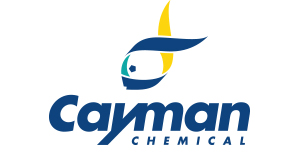Anthraflavic Acid, CAS 84-60-6
Anthraflavic Acid, CAS 84-60-6
SKU
CAY39246-1
Packaging Unit
1 g
Manufacturer
Cayman Chemical
Availability:
loading...
Price is loading...
Formulation: A solid
Formal Name: 2,6-dihydroxy-9,10-anthracenedione
Purity: ≥95%
Formula Markup: C14H8O4
Formula Weight: 240,2
Shelf life (days): 1460
CAS Number: 84-60-6
Notes: Anthraflavic acid is a polyketide synthase-derived anthraquinone that has been found in Rhei Rhizoma and has diverse biological activities.{51613,51614,51615,51616,21490,51617} It inhibits α-amylase in a cell-free assay (IC50 = 198.3 nM) and cytochrome P450 activity induced by a mixture of polychlorinated biphenyls (PCBs) in rat hepatic microsomes.{51615,51616} Anthraflavic acid binds to estrogen receptor α (ERα) and ERβ (Kis = 0.31 and 0.69 µM, respectively).{21490} It is cytotoxic against a panel of six breast cancer cell lines (IC50s = 156-241 µg/ml).{51615} Anthraflavic acid (50 µM) inhibits mutagenicity induced by the carcinogen 2-amino-6-methyldipyrido[1,2-a:3',2'-d]imidazole (Glu-P-1) in the Ames test using S. typhimurium.{51616} Topical application of anthraflavic acid (3 µmol/animal) reduces the number of tumors per mouse and the number of mice with tumors in a model of two-stage carcinogenesis initiated by 7,12-dimethylbenz[a]anthracene (DMBA; Item No. 30383) and promoted by 12-O-tetradecanoylphorbol-13-acetate (TPA; Item No. 10008014).{51617} Anthraflavic acid has been used as an anolyte in redox flow batteries.{51612}
Formal Name: 2,6-dihydroxy-9,10-anthracenedione
Purity: ≥95%
Formula Markup: C14H8O4
Formula Weight: 240,2
Shelf life (days): 1460
CAS Number: 84-60-6
Notes: Anthraflavic acid is a polyketide synthase-derived anthraquinone that has been found in Rhei Rhizoma and has diverse biological activities.{51613,51614,51615,51616,21490,51617} It inhibits α-amylase in a cell-free assay (IC50 = 198.3 nM) and cytochrome P450 activity induced by a mixture of polychlorinated biphenyls (PCBs) in rat hepatic microsomes.{51615,51616} Anthraflavic acid binds to estrogen receptor α (ERα) and ERβ (Kis = 0.31 and 0.69 µM, respectively).{21490} It is cytotoxic against a panel of six breast cancer cell lines (IC50s = 156-241 µg/ml).{51615} Anthraflavic acid (50 µM) inhibits mutagenicity induced by the carcinogen 2-amino-6-methyldipyrido[1,2-a:3',2'-d]imidazole (Glu-P-1) in the Ames test using S. typhimurium.{51616} Topical application of anthraflavic acid (3 µmol/animal) reduces the number of tumors per mouse and the number of mice with tumors in a model of two-stage carcinogenesis initiated by 7,12-dimethylbenz[a]anthracene (DMBA; Item No. 30383) and promoted by 12-O-tetradecanoylphorbol-13-acetate (TPA; Item No. 10008014).{51617} Anthraflavic acid has been used as an anolyte in redox flow batteries.{51612}

 Deutsch
Deutsch








